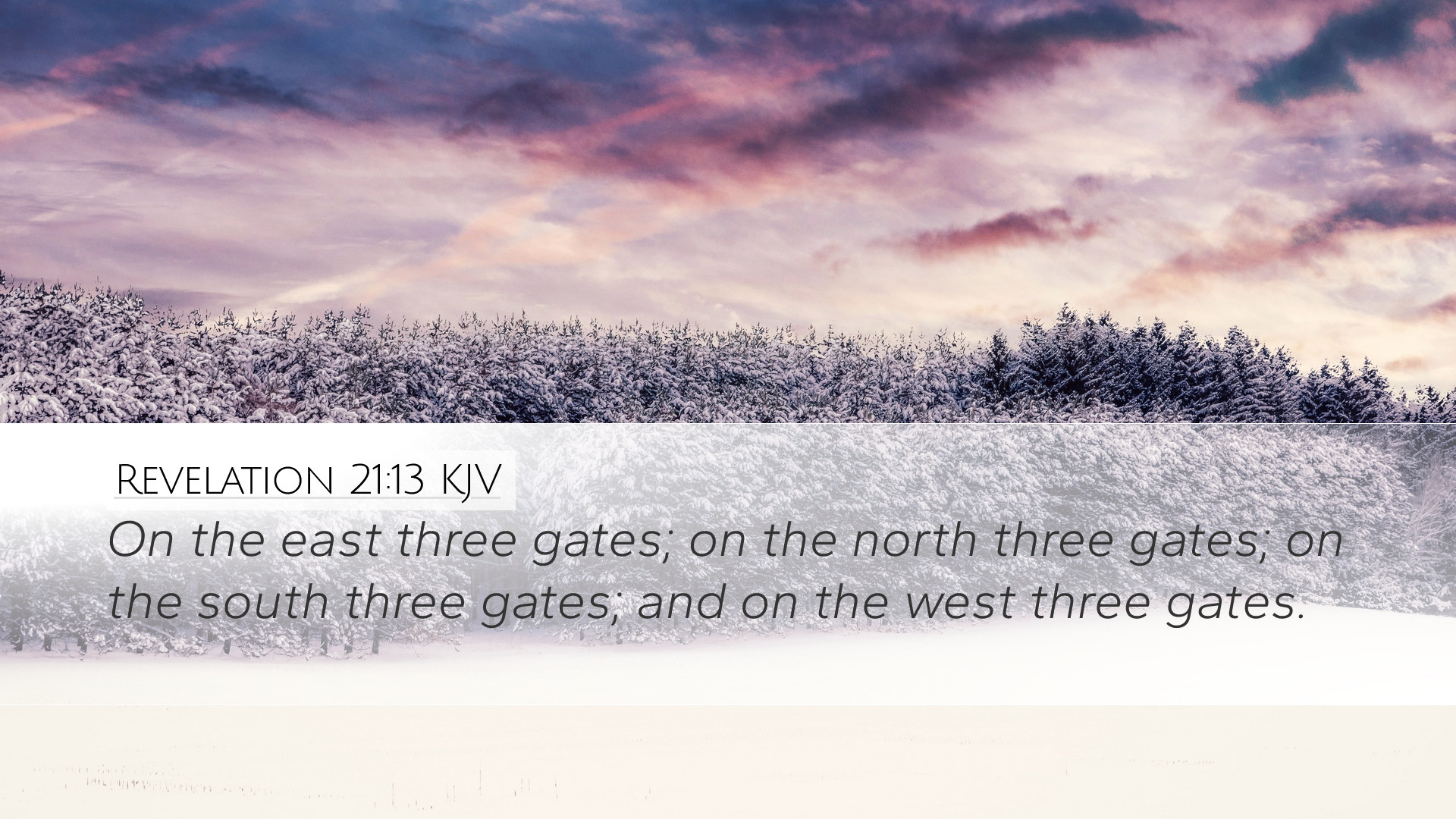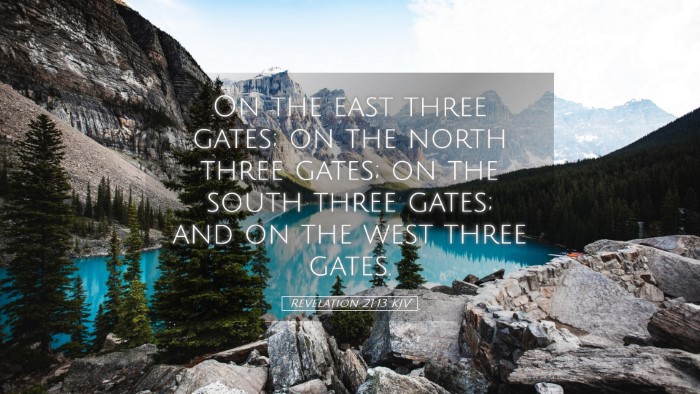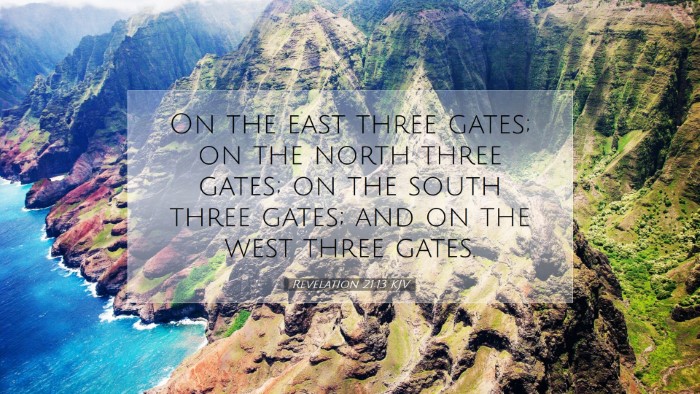Commentary on Revelation 21:13
Revelation 21:13 reads: “On the east three gates; on the north three gates; on the south three gates; and on the west three gates.” This verse is embedded within the larger context of John's vision of the New Jerusalem, which serves as a climax to the book of Revelation and a glorious portrayal of the eternal state of the redeemed.
Contextual Overview
The chapter describes a new heaven and a new earth, with the New Jerusalem coming down from God. This symbolizes the ultimate fulfillment of God's promise, where He will dwell with His people. The mention of gates is significant as it represents access and entry into this divine reality.
The Significance of the Gates
The gates of the New Jerusalem, as outlined in this verse, embody rich theological meanings and practical applications for the believer:
-
Secure Access:
The gates symbolize safe and secure access to the presence of God. Matthew Henry highlights that these gates are functional; they allow entry for the redeemed while maintaining the holiness of the city.
-
Divine Order:
The division of gates on all four sides—east, north, south, and west—indicates divine order and completeness. Adam Clarke notes that this structure reflects God's perfection in design, allowing each individual from any direction to enter, showcasing the universality of salvation.
-
Fellowship with God:
The imagery of gates opens the understanding of intimate fellowship with God. Albert Barnes emphasizes that these gates are not just physical openings but symbolize the invitation for sinners to come and find refuge in Christ.
Theological Implications
This passage also carries profound theological implications worth contemplating:
-
Inclusivity of Salvation:
The four gates remind the reader of Isaiah 54:2, which speaks of enlargement and space—pointing toward the inclusivity of God's plan for humanity. As Matthew Henry asserts, no societal classes, races, or nations are excluded from entering the heavenly city. The gates stand as a symbol of hope for all who seek asylum in Christ.
-
Unity among Believers:
The gates, placed in different directions, serve as a metaphor for the unity of believers from diverse backgrounds coming together to worship the one true God. Albert Barnes points out the harmony among the saved, converging towards the presence of God.
-
The Majesty of Christ:
Each gate reflects the grandeur of Christ. He is the way, the truth, and the life—without whom no one can access the Father. Adam Clarke encourages those pondering this passage to recognize that while there are many paths symbolically represented by the gates, all stem from Jesus Christ.
Practical Applications
The insights from this verse can lead to a variety of applications for believers today:
-
Assurance of Entry:
For believers, this verse serves as assurance of their secure position in Christ. The gates symbolize that they will always have access to God’s promises and presence through faith.
-
Call to Evangelism:
As the gates are open to all, believers are urged to share the Gospel message. The imagery encourages the faithful to invite others to enter the city of God.
-
Reflect on God’s Holiness:
The symbolic nature of the gates also serves as a reminder of God’s holiness. The city is protected and pure, prompting believers to examine their lives in light of God’s standards. Matthew Henry stresses the importance of living a life worthy of the calling we have received.
Conclusion
Revelation 21:13 is not simply a description of the structure of the New Jerusalem; it holds deep symbolic value that impacts theological reflection and practical living. Through the insights provided by historical commentaries, believers can appreciate the fullness of God’s salvation plan and the eternal home prepared for them.


